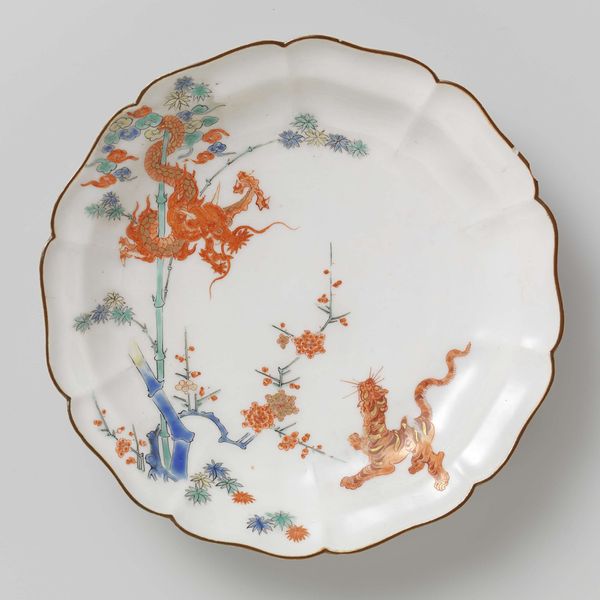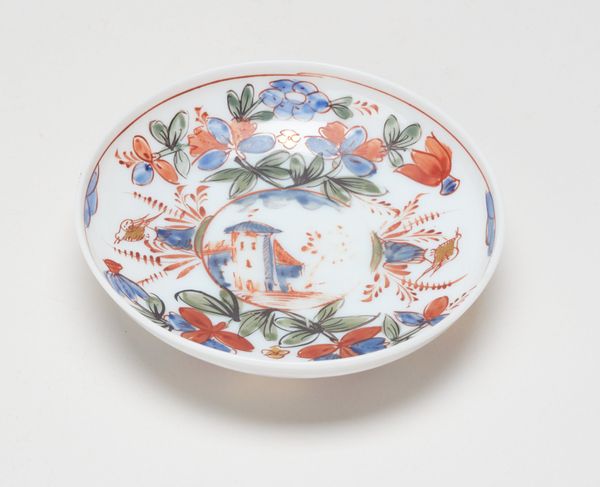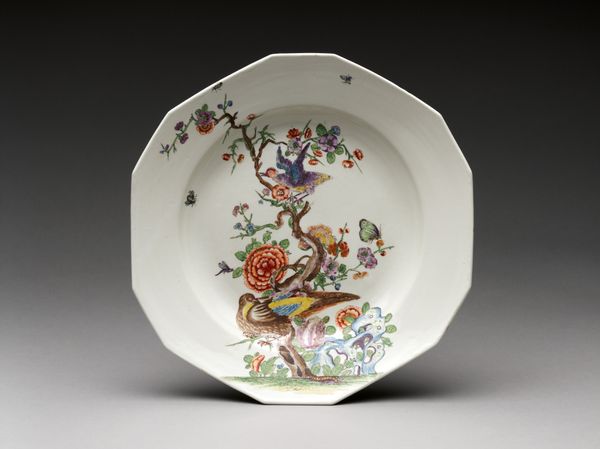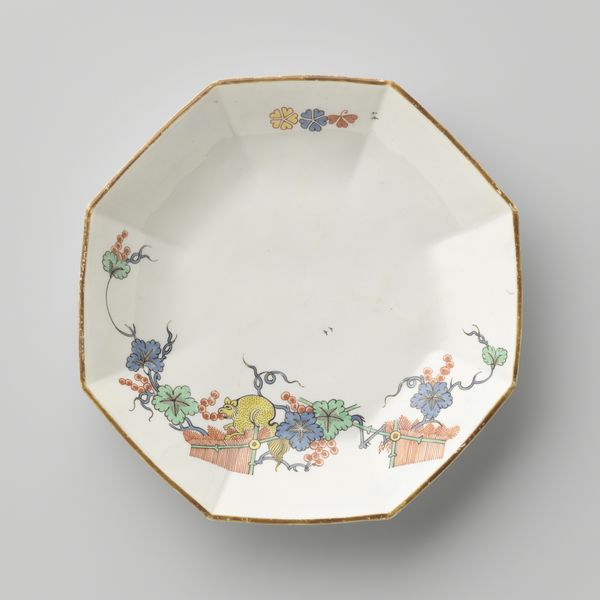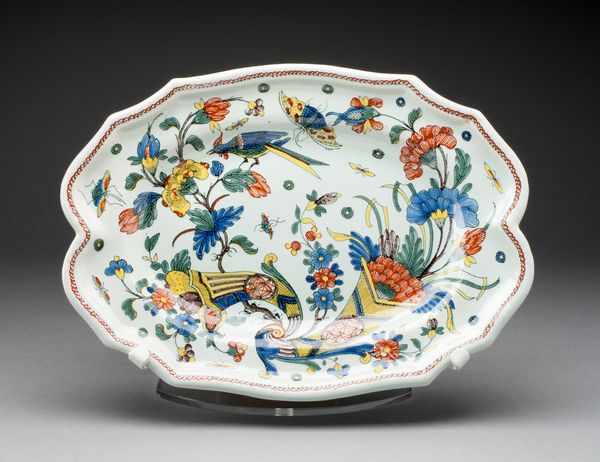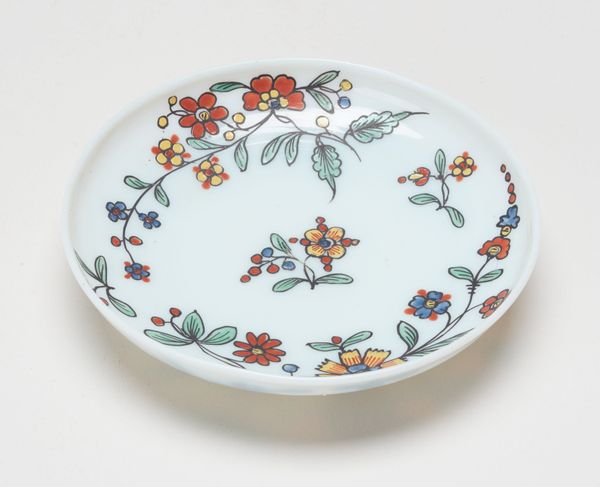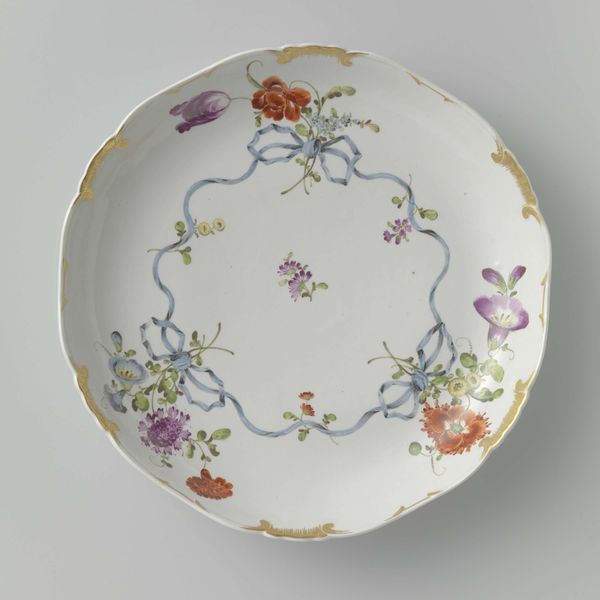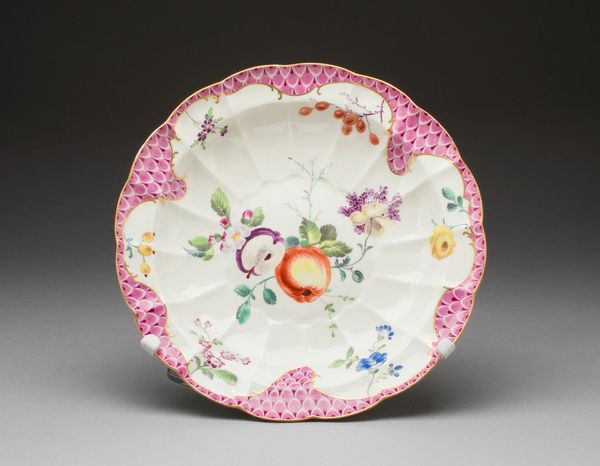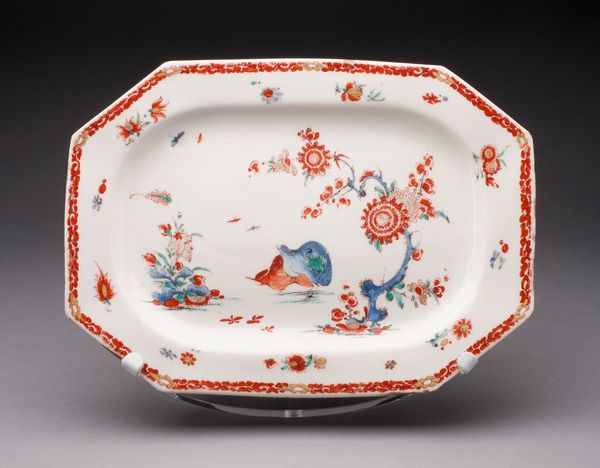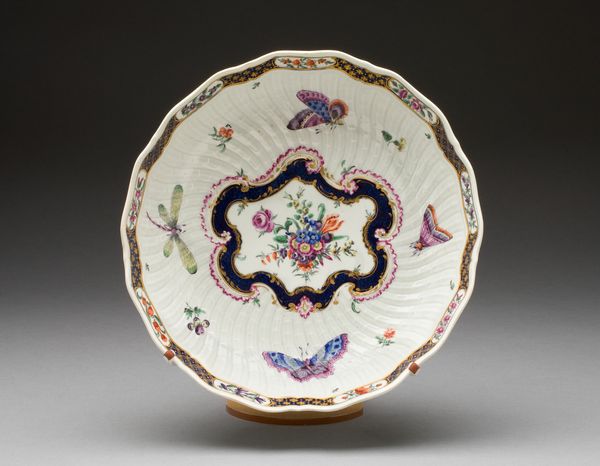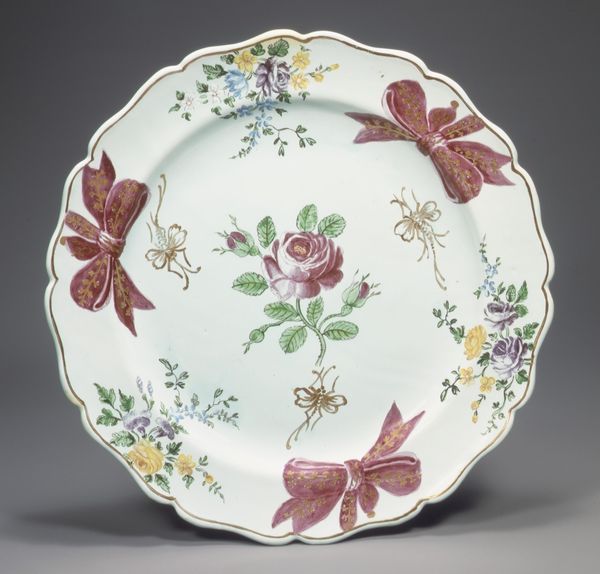
#
circular oval feature
#
decorative element
#
egg art
#
pottery
#
cake food
#
culinary art
#
stoneware
#
ceramic
#
watercolour bleed
#
food photography
Dimensions: height 4.4 cm, diameter 19.6 cm, diameter 12 cm
Copyright: Rijks Museum: Open Domain
Curator: Oh, how delightful! This is a Bow porcelain plate dating from around 1755, entitled "Plate with a boy, a shishi and flowerin plants." The hand-painted decoration features a boy playing with a tasseled object alongside a mythical shishi lion, surrounded by delicate floral arrangements. Editor: It's certainly charming. The glaze has a kind of watery, almost hesitant quality that contrasts with the bold depictions of the boy and lion. The colours are a bit faded, are they not? The maker certainly knew how to get the most out of the materials at hand! Curator: Fading is natural over time. The key is recognizing what porcelain like this represented. Bow was one of the first factories in England to produce soft-paste porcelain, attempting to emulate the prized porcelain coming from China. The shapes, the octagonal plate, and Chinoiserie motifs speaks to a growing English fascination and global trade. It places porcelain as a centerpiece of social aspiration at the time. Editor: Absolutely, and the composition and painting style highlights a critical moment in the production and consumption of luxury goods in 18th century England. Look at the details around the central figures – they show signs of pattern transfer! To what extent was labour divided to speed production on pieces such as this? It shows a complex relationship between handcrafted details and an increasingly industrialized system. Curator: Precisely. It highlights the blurring lines between artisan production and emerging industrial techniques. The very act of dining, the rituals around displaying and using such a plate, was also heavily steeped in socio-political meaning, conveying status and cultural capital to its owner. This seemingly simple decorative object spoke volumes about their social standing. Editor: It becomes clear how the ownership and display of this "simple decorative object" reflected a whole host of aspirations from emulating wealthy households through colonial authority. To have one of these items prominently featured in one’s home served a powerful socio-economic purpose at the time. Curator: Thinking about it now, such wares made these ideas about social position tangible objects, things to literally own and admire on your own dining table. Editor: Indeed, bringing grand socio-economic principles down to Earth! This porcelain plate gives great insight into 18th century consumption and its politics.
Comments
No comments
Be the first to comment and join the conversation on the ultimate creative platform.
